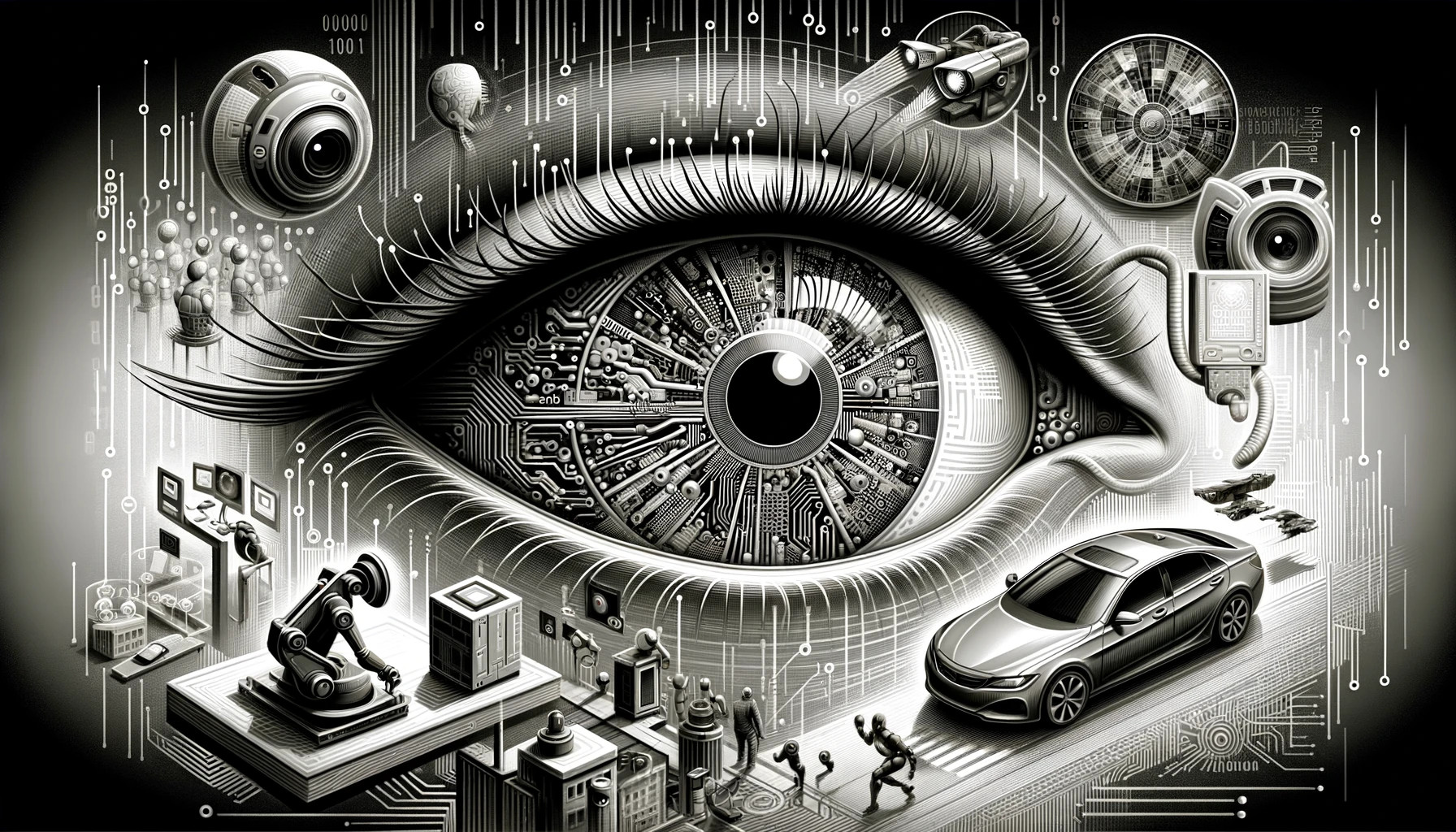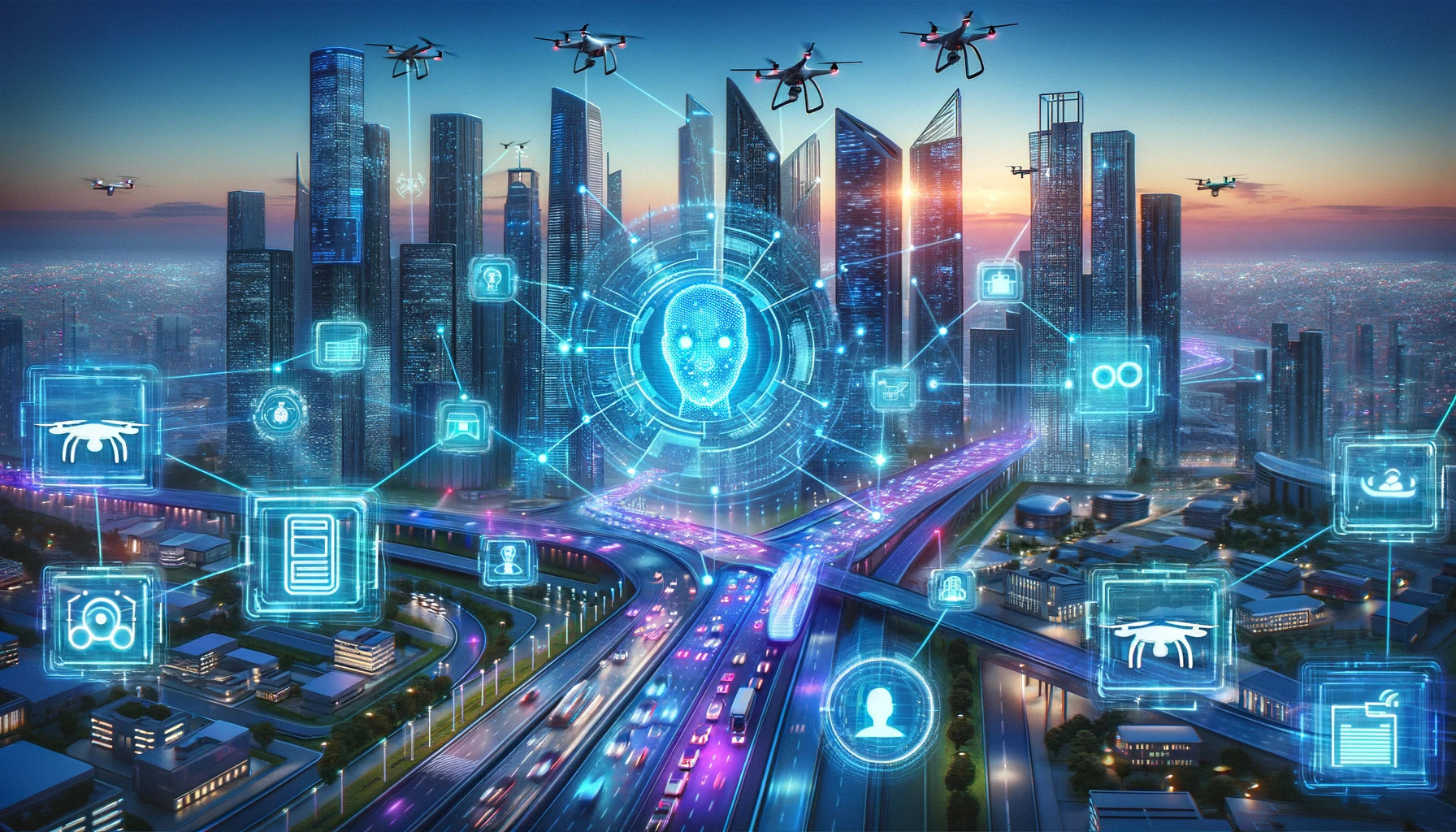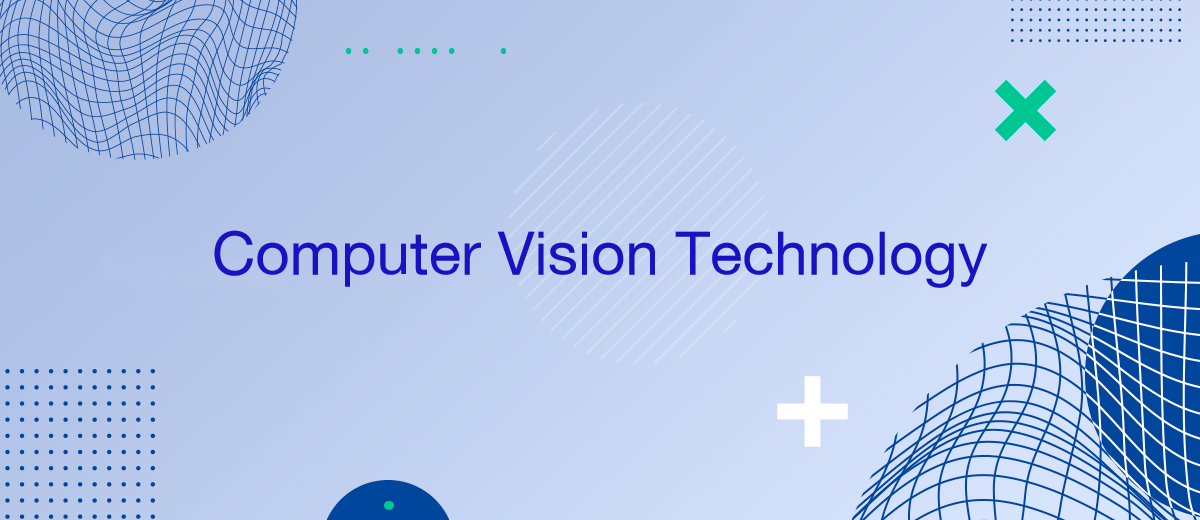The development of artificial intelligence and machine learning has accelerated the spread of related technologies: deep learning, computer vision, and natural language processing. In our article, you will learn about what computer vision is, the areas in which it is used, and its advantages, limitations, and future prospects.
The Fundamentals of Computer Vision
Computer vision (CV) is an AI technology that allows computers to recognize and analyze information from digital photos, videos, and other visual sources. With its help, systems can “see” the world like living beings and perform many actions based on the information received. The technology uses a combination of cameras, downloaded data, and AI algorithms to operate. Its main advantage is considered high performance – neural networks process a large amount of information faster than the human eyes and brain.
The first computer vision projects arose in the 1950s and gradually developed, but their capabilities were very limited. A powerful leap in this direction occurred in the 2000s after the advent of deep learning technologies – in particular, Convolutional Neural Networks (CNN). With their help, neural networks using computer vision view and analyze huge amounts of data many times until they learn to recognize objects in it.
Thanks to machine learning algorithms, computers independently learn to understand the context of visual data. Using CNN technology, artificial intelligence divides the image into pixels. Each of them is assigned specific tags. Based on them, the system can predict events and make decisions about what actions it needs to take. To analyze video, it uses Recurrent Neural Networks (RNN) technology, which allows it to understand the relationships between frames.
- Automate the work with leads from the Facebook advertising account
- Empower with integrations and instant transfer of leads
- Don't spend money on developers or integrators
- Save time by automating routine tasks
The capabilities of modern computer vision are quite extensive. Among the most popular are:
- Object recognition. Using CV, AI identifies individual objects in a photo or video. For example, it can highlight people and analyze their appearance to classify them according to specified criteria. In addition, it effectively identifies any other objects: damaged items, equipment requiring maintenance, and so on.
- Object tracking. Computer vision is capable of recognizing not only static but also moving objects, keeping them in focus after detection. This ability is very useful for self-driving cars. It helps them track other vehicles, pedestrians, and road infrastructure.
- Classification of objects. The system finds and analyzes objects in photos or videos, and then assigns them to one category or another. Thus, it can determine whether an object belongs to a specific class. This ability is often used by social networks and other sites to categorize user-generated content.
- Optical character recognition. The neural network identifies numbers and letters in images and then converts them into machine-coded text. In this form, it can be interpreted and processed by computers, as well as edited by users.
- Content-based image search. Performed with the participation of CV, image recognition makes it possible to find content of a certain type and extract it from large amounts of data. As part of this function, automatic creation of annotations for images is available, simplifying and speeding up the search for content.
Applications of Computer Vision

Every year, computer vision is increasingly used in many areas, including manufacturing, transportation, medicine, entertainment, and so on. The most popular computer vision applications:
- Driverless cars. The technology has had a significant impact on the development of unmanned vehicles. With its help, the computers that control cars track objects on the roads, pedestrians, road signs, lane markings, and traffic routes. It helps AI analyze information from cameras and sensors, quickly making optimal decisions while driving.
- Augmented reality. Computer vision is one of the main tools for creating augmented reality, which allows computers to embed virtual objects into the real world. Thanks to it, they recognize and track physical objects. The AI then uses this data to realistically place digital content in the world around it, selecting sizes, proportions, placement, and so on.
- Face recognition. This direction is one of the most promising applications of computer vision. Algorithms identify facial features in photos and videos, and then compare their details with profiles stored in the database. CV technology is actively used for identity verification by law enforcement agencies, social networks, and security system providers.
- Production. Computer vision shows high effectiveness in identifying product defects during production. It is often used in robotics and workflow automation. It helps robots pick and carry objects, perform assembly, packaging, and quality checks. In addition, the technology is useful for monitoring equipment and predicting the need for maintenance, repair, or replacement.
- Content processing. CV helps AI models identify and analyze visual content by categorizing photos and videos. Applications of this type are in high demand among social networks, photo stock sites, and other resources with user-generated content. Optical character recognition allows systems to automatically extract and process large volumes of text.
- Medicine. Healthcare is another promising application of computer vision. The technology automates the processing of visual materials necessary for making a diagnosis and prescribing therapy. It is used to search for symptoms on X-rays and MRIs, determine signs of cancer from skin photos, and so on. CV has also proven itself well during surgical operations.
- Agriculture. Specialized neural networks use computer vision in the process of automating sowing and harvesting. They help monitor plant health, fight weeds and pests, and more. This technology can be used to automatically spray pesticides and herbicides, monitor crops using drones, analyze data about weather or soil, as well as sort and classify crops.
- Commerce. Retailers are implementing CV-based programs to monitor shoppers on the sales floor. In addition, it has found application in the field of e-commerce. Here, searching for products by image, analyzing user behavior, and personalizing advertising are in demand. It can also be used to automate inventory management, optimize supply chains, and other operations.
Benefits and Challenges
The capabilities of artificial intelligence in computer vision have provided this technology with many important advantages. Among them are:
- Performance. The combination of CV and AI effectively automates many workflows, particularly good at handling routine tasks. Computer systems perform many operations faster and more efficiently than humans, and also make fewer mistakes.
- Savings. Process optimization using computer vision helps reduce production, personnel, and other operating expenses. In addition, this technology facilitates the rapid search for defects and any shortcomings in products, allowing them to be corrected at the quality control stage.
- Safety. The introduction of CV into security systems and unmanned vehicles helps to identify threats in advance, prevent accidents and incidents.
- Quality of service. Thanks to the capabilities of neural networks, companies personalize their products and services based on customer behavior and preferences. This improves the customer experience and helps increase audience loyalty.
- Decision-making. Computer vision helps AI generate relevant predictions based on collected data in real time. Companies using this tool speed up the right decisions, which benefits their business.
Along with its advantages, technology also has certain disadvantages that can complicate its development and application. Such challenges include:
- Data quality. Computer vision with deep learning requires extensive and diverse datasets. It can be difficult to prepare them for certain areas and tasks. The datasets used often contain biased or unreliable information. This negatively affects the accuracy and quality of the results produced by the system.
- Vulnerability. The operation of CV algorithms can be disrupted by attacks or other targeted changes to the input data. Such interference can lead to incorrect predictions or misclassification. Environmental variability is another dangerous factor for AI.
- Interpretability. One of the significant challenges of the technology is the difficulty of interpreting the predictions generated by the deep learning models that underlie them. Because of this, many experts consider them “black boxes” that lack transparency and accountability.
- Availability. The development of large-scale neural networks with computer vision support requires not only large amounts of data but also serious computing resources. This factor makes the technology costly and limits the possibilities for its mass implementation in certain areas.
- Ethical and legal issues. The spread of AI computer vision gives rise to ethical problems related to the observance of equal rights and combating discrimination on any grounds. This implies the need to adopt standards for regulating such technologies at the legislative level.
- Confidentiality. Computer vision systems can pose a threat to people's privacy by recognizing faces or collecting visual data. In this regard, effective measures to protect against unauthorized access and information leakage are especially important.
Future Trends and Potentials

The integration of deep learning for computer vision has ensured significant progress in this technology in just a matter of years. Researchers estimate that CV market exceeded $17 billion by the end of 2023 and could reach $41 billion by 2030. Innovation is rapidly transforming many industries, including retail, healthcare, automotive, and robotics. CV's potential will increase markedly with greater integration with other AI technologies, including natural language processing, reinforcement learning, and others.
As for future trends in computer vision, one of the main ones is considered to be the massive spread of unmanned vehicles. This could radically change the entire road infrastructure. Another promising area for CV is medicine. Here, it will increase the speed and accuracy of diagnoses, the efficiency of surgeries, and other procedures. In addition, the technology will facilitate the development of telemedicine, mobile, and wearable medical devices.
Conclusion
The use of computer vision has enormous potential in the areas of process automation, generating forecasts, and insights. Particularly valuable is its ability to quickly analyze large volumes of visual data, identify patterns, and make decisions based on them. All this makes it possible to successfully use computer vision algorithms in many industries – from medicine and agriculture to entertainment and content processing. However, along with a number of important advantages, this technology also has certain challenges that the companies implementing it must solve. Nevertheless, the rapid development and spread of CV clearly indicate that it will become an indispensable human assistant in the near future.
What do you do with the data you get from Facebook lead forms? Do you send them to the manager, add them to mailing services, transfer them to the CRM system, use them to implement feedback? Automate all of these processes with the SaveMyLeads online connector. Create integrations so that new Facebook leads are automatically transferred to instant messengers, mailing services, task managers and other tools. Save yourself and your company's employees from routine work.

